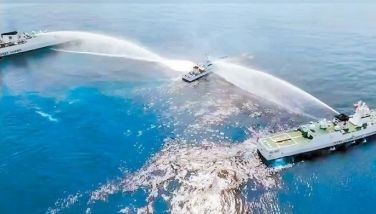Closed FPIC pipeline ready to resume normal operation
MANILA, Philippines - The Lopez-owned First Philippine Industrial Corp. (FPIC) has pushed for the re-opening of their white oil pipeline that was earlier ordered temporarily closed due to fuel leakage affecting residents of West Tower Condominium in Makati City.
In a hearing at the Court of Appeals (CA) on a Kalikasan petition filed by residents, FPIC officials said the 117-kilometer pipeline from Batangas to Manila is ready to return to normal operation after necessary maintenance had been conducted.
They assured residents that the 43-year-old pipeline could still operate under proper maintenance, citing US standards. Einstein Chiu, technical services department head engineer of FPIC, said the pipeline is still safe for operation despite the leakage two years ago.
He contested the claim of petitioner’s lawyer Lorna Kapunan that the pipeline should have already been replaced, given the wear and tear problems linked with its age.
During his cross-examination by Kapunan on the acceptable age of a pipeline to transport oil, Chiu told the appellate court that the US Code of Federal Regulations – which is being used by the FPIC as its reference for its pipeline operation and maintenance – does not mention any particular life expectancy for a fuel pipeline on the ground.
Chiu admitted that the indefinite use of the pipeline is dependent on its proper maintenance, that is why FPIC has put in place all the necessary safeguards to maintain its structural integrity.
His claim was supported by two other FPIC officials – Operations and Maintenance Division chief and senior vice president Ireneo Raule Jr. and Electrical Maintenance and Anti-corrosion Division head Anthony Cepillo – during the hearing last May 4.
In his testimony, Raule told the CA that several measures are being undertaken by the company to assure and enhance the integrity of the white oil pipeline.
These measures include the conduct of in-line inspection tests using “technically advanced” (measures) to discover any pipeline wall loss that would be the result of corrosion or other causes; ensuring that an anti-corrosion system is in place; the conduct of regular cleaning scraper runs through the pipeline, which clear the pipeline of any debris, product build-up and deposits, or any possible obstructions in the internal surface of the pipeline; putting up above-ground warning signs and markers along the pipeline to let the public know where it is; conducting daily patrols along the pipeline route to prevent unauthorized diggings; coordinating regularly with local governments, the Department of Public Works, the Metropolitan Manila Development Authority and utility companies to ensure the safety of the pipeline.
CA Associate Justice Fernanda Lampas Peralta, presiding officer, asked Raule what is the standard measurement of an oil pipeline’s wall thickness.
Raule told the Court the minimum thickness for safe commercial operations is 2 millimeters, noting that the FPIC pipeline’s original thickness was 8.7 millimeters.
Raule said the average thickness today is 8.6 mm but added that “as a matter of diligent maintenance procedures” when pipeline wall loss of even just 1 mm is discovered, that segment of the pipeline is repaired or reinforced.
He explained that cathodic protection systems are commonly used to protect a wide range of metallic structures like water or fuel pipelines and storage tanks; steel pier piles; ships and boats; offshore oil platforms and onshore oil well casings and metal reinforcement bars in concrete buildings and structures.
Cepillo, on the other hand, told the CA that the company uses “a cathodic protection system to protect the pipeline from corrosion.”
Earlier, the Department of Energy filed a manifestation before the CA reiterating that the pipeline is already safe for operations after tests conducted last December indicated no more leaks in the pipeline.
The energy department recommended to allow FPIC to start its operation pending the resolution of the petition for a writ of kalikasan with a motion for the issuance of a permanent environment protection order (EPO) filed by West Tower residents who were displaced due to the fuel leak.
Layug told the CA that the 43-year-old pipeline is still the “safest and most efficient” mode of transporting petroleum products despite of the leakage it experienced since “it poses lower risks to life and limb.”
He noted that the pipeline has a higher level of reliability than transporting the fuel products on trucks as it is not affected by weather, traffic and truck ban in Metro Manila and provides for complete and timely delivery of product.
The DOE official added that product loss and incidents of theft and pilferage are also minimized.
It also endorsed the recommendation of its technical consultant, SGS, for the realignment of the Bangkal segment of the pipeline out of the Magallanes interchange as soon as possible for safety and maintenance reasons.
The DOE also assured the court that the monitoring of the pipeline and safety precautions would continue and that its operation would be immediately stopped in case a leak is detected.
Prior to its closure, the pipeline supplied more than 50 percent of the petroleum products for Pandacan, considered as the largest and most important depot in the country which supplies fuel to 459 gas stations in Metro Manila and about 1,800 gas stations in Regions 1 to 4.
- Latest
- Trending

































